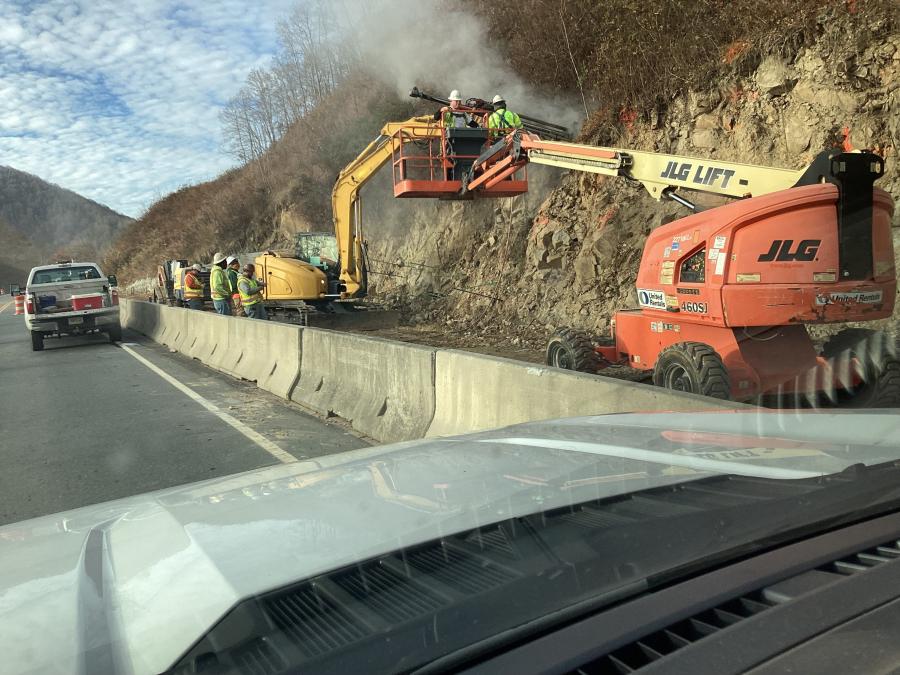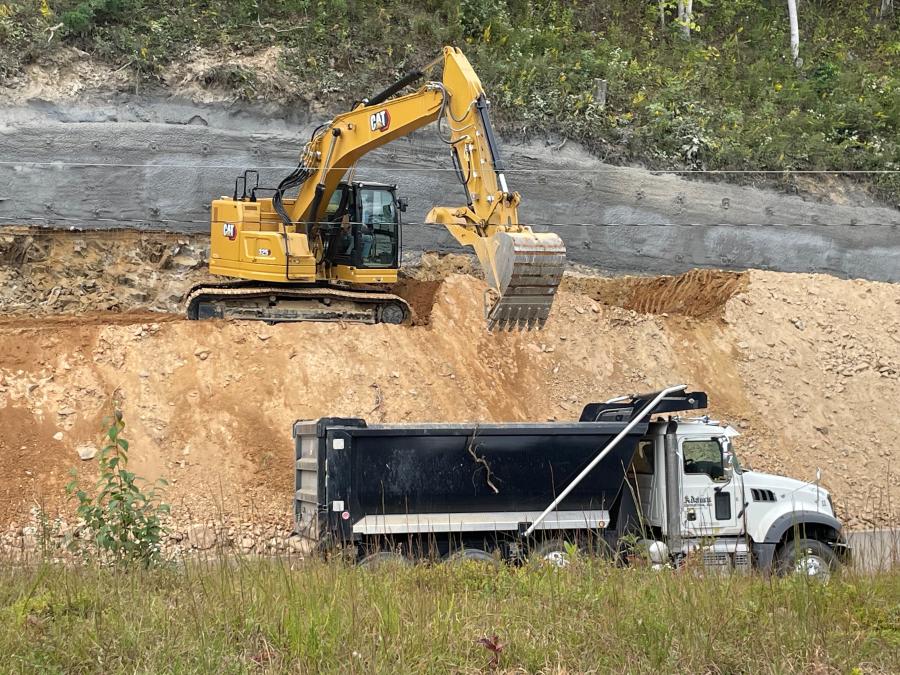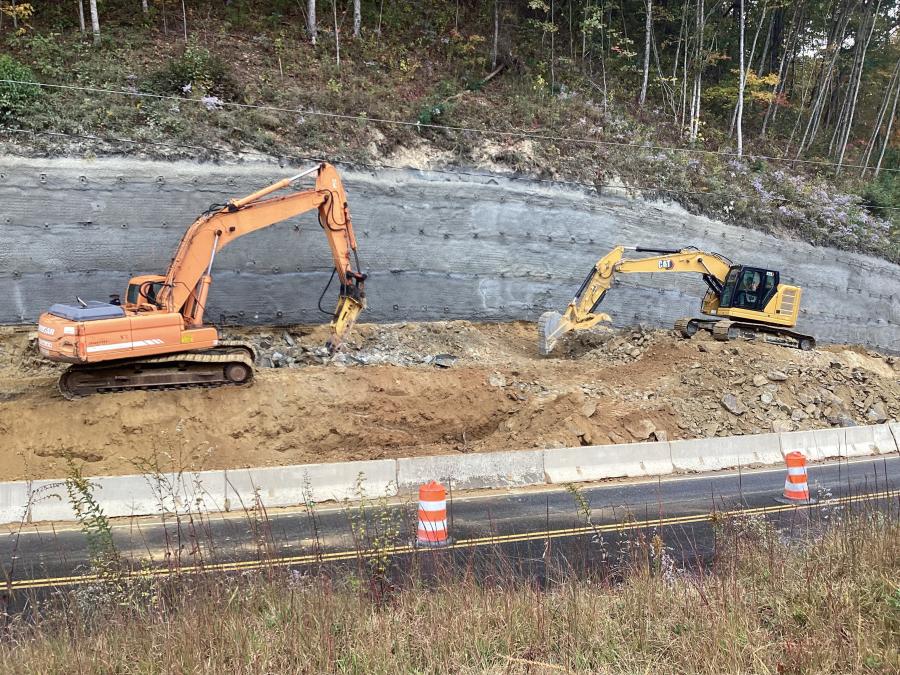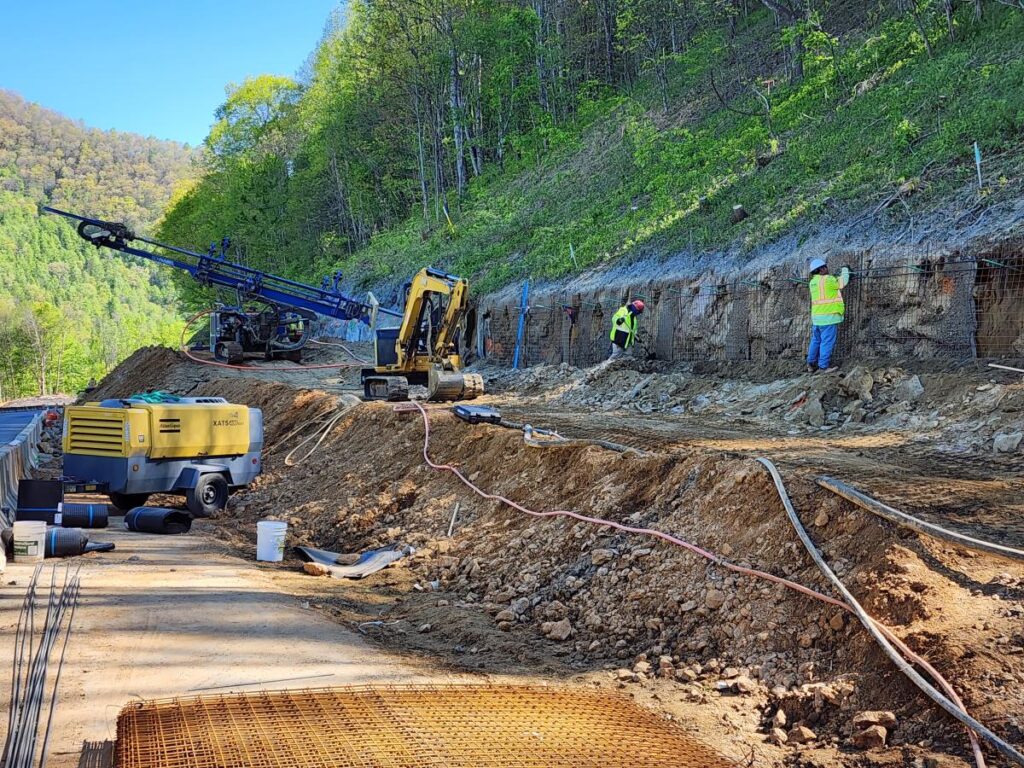Photo courtesy of NCDOT
A complex project with a long history in western North Carolina will improve mobility and pave the way for economic development when the ribbon is ultimately cut.
A complex project with a long history in western North Carolina will improve mobility and pave the way for economic development when the ribbon is ultimately cut. Construction on Corridor K, a $681 million undertaking, began in late 2022, following decades of planning and discussions.

Photo courtesy of NCDOT
“This project will provide the transportation infrastructure necessary for the well-being of local residents and regional traffic by improving vehicular travel time, reliability and safety between the existing four-lane section on N.C. 28 at Stecoah and the existing four-lane section on U.S. 74 east of Andrews,” said Adam Dockery, NCDOT Division 14 resident engineer. “It will provide an average travel speed of 50 mph, consistent with the Appalachian Development Highway System criteria, and in a manner that is sensitive to the natural environment.”
According to Dockery, Corridor K is a major infrastructure upgrade for the residents and visitors to a rugged and rural section of western North Carolina. The existing two-lane highway is outdated and narrow, with sharp curves and steep elevation changes.
“These improvements will provide residents with better access to education, health care, commercial centers and job opportunities that the existing roads currently hamper.
“Currently, there are only two ways to drive between Almond and Topton. Both are two-lane highways — this is one and the other is on the two-lane U.S. 74 through the Nantahala Gorge. In fact, only four paved roads provide access to Graham County.”
Physical needs are related to the limited roadway options in Graham and Cherokee Counties and how reliability can be affected by any type of blockage or disruption, including winter weather, fog, washouts, landslides, fallen trees, traffic incidents, breakdowns or slow-moving vehicles.
“Such situations adversely affect travel time as travelers must wait or backtrack,” Dockery explained. “Steep grades, narrow lane widths and sharp curves on U.S. 129, N.C. 143 and N.C. 28 affect travel speed and opportunities to pass slower vehicles. In addition, there are sections of U.S. 129 and N.C. 143 where traffic volumes will be over-capacity in 2040.”
The project is part of Corridor K of the Appalachian Development Highway System, which is a network of road corridors that Congress established in 1965 to provide a safe, efficient transportation system for the Appalachian Region. Corridor K extends from Dillsboro in Jackson County to I-75 in Cleveland, Tenn. The project is located in southwestern North Carolina near the Tennessee and Georgia borders. Given the challenges associated with the region’s mountainous terrain and the presence of natural and cultural features, the proposed project is among the last of the Appalachian Development Highway System’s corridors to be completed.
Dockery noted that environmental constraints contribute to what’s been described as a difficult construction operation.

Photo courtesy of NCDOT
“We are rigorous in our attention to every detail in the environmental documents. We take pride in our care for the natural environment before, during and after construction.
“After the public meetings in 2019, field biologists, geologists, engineers, architectural historians and archaeologists conducted field surveys for use during the NEPA process. These studies included protected species evaluations, stream and wetland delineations, visual impact assessment, air and noise studies and cultural resource surveys. After field surveys were completed, alignments were refined to avoid and minimize impacts to environmental resources. Other measures, such as retaining walls and slope adjustments were evaluated to further reduce impacts.”
To improve road alignments of U.S. 129, N.C. 143 and N.C. 28 between U.S. 129 south of Robbinsville and the existing four-lane section of N.C. 28 in Stecoah, the design calls for improving vertical and horizontal curvatures along the routes, plus wider lanes with paved shoulders and climbing lanes. The lane width will increase to 12-ft. and the shoulder increases to 10-ft.
The project also includes construction of a bridge across N.C. 143 at Stecoah Gap.
“This is a land bridge constructed using CON/SPAN to provide safe passage for hikers and wildlife. It will be covered with dirt, boulders, rocks, trees, shrubs and additional vegetation to blend it as much as possible with the surrounding landscape. The Appalachian National Scenic Trail [ANST) will remain open for hikers who will walk a few feet through a fenced trail detour at times during construction. The current crossing of the ANST is at-grade and in a vertical curve. Hikers basically descend off the wooded slope onto the narrow two-lane highway in a blind curve.”
Dockery said the main challenges for crews have been constructing the cuts and fills, wall construction and drainage. The narrow and mountainous terrain and associated environmental constraints are major concerns.
“It’s tedious work. Our terrain is so steep, and we’re so confined in areas that it’s difficult to get to the top to get the slope to excavate for wall construction.”
As this project involves both cuts and fills, coordination of excavation activities in the cut areas is essential to optimize operational efficiency. By phasing the process to allow for direct hauling of excavated material to designated fill areas, crews are significantly enhancing efficiency, minimizing the need to handle dirt multiple times.
While much work remains, Dockery said clearing is already complete. Some permitted sites, such as pipe installation and tasks that had time restrictions have been finished. Currently, wall construction on Stecoah Mountain is under way, along with embankment construction in valleys and the installation of drainage systems/pipes.

Photo courtesy of NCDOT
Dockery said the routes are routinely affected by winter weather, due in part to the elevation.
“Snow and ice are very common in this area. It can be raining in Robbinsville but dumping five inches of snow at the top of Stecoah Mountain. The project can be slowed two or three days a week during the winter months.”
A total of 416,000 cu. yds. of dirt will be moved during construction, which primarily involves large, tracked excavators. Stone, concrete and various pipe materials will all be used by crews.
Watson Contracting Inc., Charles Blalock & Sons Inc. and Adams Contracting Co. Inc. were selected to carry out the various tasks.
“These contractors are a good fit because they have previously performed this type of work,” said Dockery. “Each is based in western North Carolina, so they bring a sense of familiarity with conditions to the project, as well as local pride.”
Improvements to the 12-mi. portion of Corridor K between Robbinsville and Stecoah began in November 2022, with the awarded sections expected to be completed by August 2026. CEG
Read the full article here











